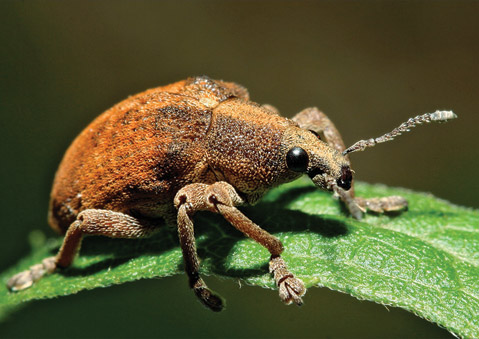Eucalyptus Woes
Non-native Pests Sink Their Teeth into S.B. Trees

People are noticing and asking what is up with the defoliation of eucalyptus trees lately. Whether one admits to the love/hate relationship Californians have with these nonnative trees, they are a definite presence in the landscape here — sometimes a dominant one. As with any other import, the eucalyptus trees have evolved in their own particular environment. That place has its own ecosystem comprising everything from the macro forms like trees to the micro forms like insects and fungi. In their native place, all these forces of nature are in some kind of balance with each other. Introduce one or more elements into a new ecosystem, and there may be imbalances.
Some years ago, a couple of the insects that naturally feed on eucalyptus trees in Australia stowed away on shipments coming to the U.S. and became established here. Unfortunately, their predators did not come along with them. Once here, they were free to chew and suck to their hearts’ content with no consequences.
Two of them are species of eucalyptus tortoise beetle. Both adults and larvae of these beetles chew notches in the margins of the leaves. This is the most prominent evidence of their damage. The larvae hatch under leaves or loose bark and may also drop from the trees to the loose bark and other duff on the ground. They feed mostly at night and hide under loose bark during the day, so spotting the culprits may not be easy. These beetles may also concentrate in the higher regions of the trees and go unnoticed at first until the evidence of fallen, chewed leaves and the lacy foliage above become prominent.
Another leaf-chewing insect, the eucalyptus snout beetle, was also a pest for a number of years before the University of California identified and tested a parasite to keep it in check. The predatory insects search out the eggs of the snout beetle and lay their own eggs on them. When they hatch, they devour the snout beetle eggs before they can hatch. This is the usual strategy for researchers; find a natural enemy, and introduce it to establish control. Biological controls have been developed for the tortoise beetle, but it is unclear if the predators of the snout beetle have become well established enough. Field tests have not been able to recover the pests to verify their activity.
Another type of pest has also stowed away on overseas shipments; the psyllid. Psyllids — also known as lerp psyllids — are very small and hard-to-spot sucking insects. The evidence of their infestation is a general yellowing of leaves, as well as a sooty residue from the fungi that feed on their excretions (and this is just a slice of the complex ecosystems that exist on the leaves of trees). The bluegum psyllid is more-or-less under control now after the introduction of a natural enemy. A more recent outbreak of the redgum psyllid is plaguing area eucalyptus trees, however. Although biological controls have been introduced, psyllids may still become established and damage trees.
The bottom line is that there is no “cure” for these insect problems. The species of eucalyptus affected are mostly quite large. Even if there were an effective chemical control, it would be costly and nearly impossible to apply. What to do? The first treatment is prevention. Keep trees in good health, and they will be able to recover from an infestation. One key factor is that all of these pests prefer new, soft leaves, so fertilization that promotes growth should be avoided. There are some resistant eucalyptus varieties, so tree replacement with a different species is an option. For an in-depth analysis of these eucalyptus woes, go to ipm.ucdavis.edu/PMG/menu.homegarden.html. Maybe the real solution is to plant native trees whose native pests and predators are already in place.



